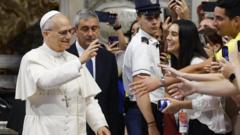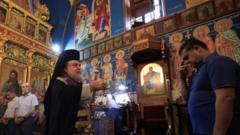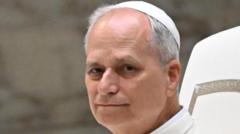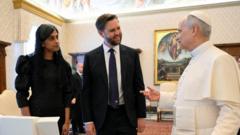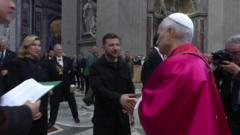The recent inauguration of Pope Leo XIV highlights the transformative journey of the papacy from regal ceremonies to modern inclusivity.
Pope Leo XIV: A New Era for the Papacy

Pope Leo XIV: A New Era for the Papacy
Exploring the evolution of papal traditions in the wake of Pope Leo XIV's inauguration.
Pope Leo XIV presided over his inaugural Mass on Sunday, marking a significant moment in the history of the papacy. In contrast to past centuries, the sacred occasion notably lacked the traditional crowning of the pontiff with a magnificent gold and jewel-encrusted tiara. The last papal tiara was used during the reign of Pope Paul VI in 1964, who, instead, opted for a miter, a choice upheld by his successors.
Renowned journalist Thomas B. Morgan, in his 1937 book “A Reporter at the Papal Court,” captured the splendor of papal inaugurations, emphasizing the ceremonial aura that enveloped past popes. For centuries, from the 12th century until the 20th century, the coronation of popes was a grand spectacle, complete with the tiara during high ceremonies. Pope John Paul II, during his inauguration Mass in 1978, acknowledged past traditions but shifted the focus, distancing the new papacy from symbols of temporal authority.
Archival footage offers a glimpse into this regal past, portraying emotionally charged ceremonies filled with public grandeur, such as the crowning of Pope Pius XII in 1939, which saw thousands gathered in exaltation. Changes initiated by Paul VI, including the relocation of the inauguration to the front of St. Peter's Basilica, signify a movement towards modernization, opening the Church to a more contemporary essence. Observers anticipate how Pope Leo XIV will further navigate the balance between tradition and progress as he leads the Catholic Church into a new era.
Elisabetta Povoledo is a veteran journalist based in Rome, specializing in Italy’s cultural and ecclesiastical narratives.


